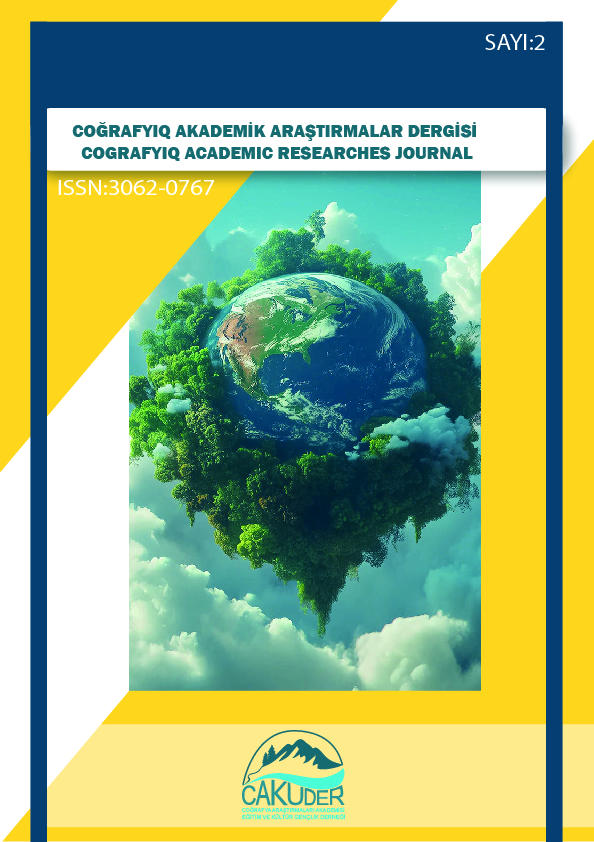Soil Characteristics of Gökyurt and Its Surroundings (Southwest of Meram District)
DOI:
https://doi.org/10.5281/zenodo.14799873Keywords:
Gökyurt, Soil Type 2, Bare RockAbstract
Soil properties are divided into different types due to lithology, hydrography and climate. Problems such as erosion, shallowness and stonyness occur in the soils of the field. At the same time, as a result of erosion in volcanic materials, which we see in our study field, it shows itself in geomorphological formations such as Kırgıbayır and fairy chimneys. The main purpose of the study is to evaluate the soil structure in the sample of Gökyurt and its surroundings, to map it and to examine the relationship between culture and geomorphological features. Soil structure and affecting factors were examined through the meta-analysis method and articles, theses and reports were evaluated.
Gökyurt and its immediate surroundings, which are located within the borders of Meram district of Konya province and have been used as a settlement since ancient times, were selected as the research field (Figure 1). The area determined as the study field consists of approximately 549.8 km2. Gökyurt, Kayalı, Erenkaya, Kumralı, Yatağan, Sefaköy, Güneydere (Botsa) and Evliyatekke neighborhoods constitute the settlement areas in the field. The soils of the research field can be examined by dividing them into ten different soil types as a result of the effects of lithological features, hydrography and climate features. Among these, reddish chestnut soils and non-calcareous brown forest soils cover a large area. Erosion, shallowness and stonyness are the most important problems in the soils formed in the field. As a result of this situation, especially as a result of erosion in volcanic materials, rock formations and fairy chimney formations are evident.
As a result, the soil structure is affected by this situation due to the large area covered by volcanic material in the field. The soils formed as a result of the decomposition of volcanic rocks cover a large area. Especially in soils with weak natural vegetation, erosion becomes easier and diversifies the geomorphological appearance. Erosion, shallowness and stonyness are the most important problems in the local soils. This situation especially shows itself as the formation of rock formations and fairy chimneys as a result of erosion in volcanic materials. Different natural vegetation has adapted to the soils in the study area. This difference shapes the cultural activities caused by the use of the soils.
References
Bakioğlu, A., Göktaş, E. (2018). “Bir eğitim politikası belirleme yöntemi: Meta analiz”. Medeniyet Eğitim Araştırmaları, 1(2):35-54.
Baylak, H.M. (2023).Kilistra (Gökyurt) Yöesi’nin Kültürel Jeomorfolojisi,Konya. Çankırı Karatekin Üniversitesi, Sosyal Bilimler Enstitüsü (Yayımlanmamış Doktora Tezi). Çankırı.
TKİB (Tarım ve Köy İşleri Bakanlığı) (1992). Konya ili arazi varlığı, Tarım ve Köy İşleri Bakanlığı Köy Hizmetleri Genel Müdürlüğü İl Rapor No: 42; 12-18. Ankara
www.nvi.gov.tr, Erişim Tarihi: 19.04.2023, saat; 22.15
Published
How to Cite
Issue
Section
License
Copyright (c) 2025 Dr.Halil Mesut Baylak, Tevfik ERKAL

This work is licensed under a Creative Commons Attribution 4.0 International License.



